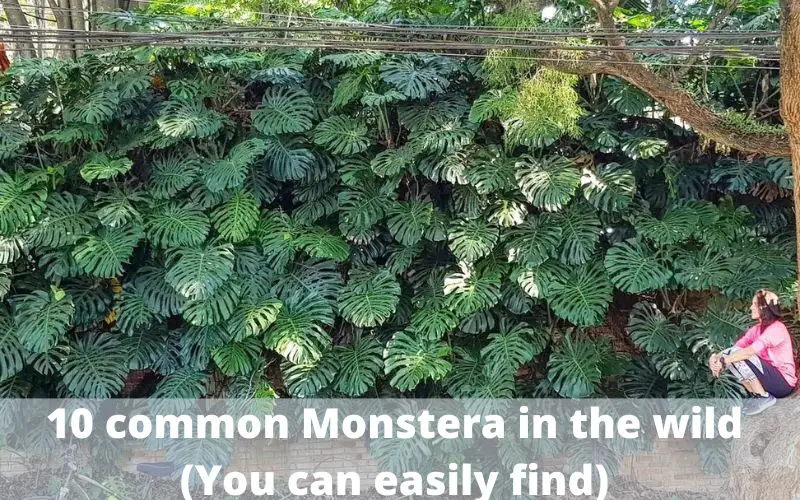If you’re into house plants, you’ve probably heard of Monstera. This easy-to-care-for plant is popular for a reason: its big, lush leaves make a statement in any room. And while it’s possible to find Monstera at your local garden store, they can also be found growing wild in certain parts of the world.
10 common Monstera in the wild
If you’re looking for Monstera in nature, here are 10 common species you can easily find:
1. Monstera deliciosa in the wild
Monstera deliciosa, or Monstera as it’s more commonly known, is a tropical plant that’s native to the rainforests of Central and South America. It’s an evergreen climbing vine that can grow up to 20 feet in length, and its large, glossy leaves make it a popular houseplant.
In the wild, Monstera climbs trees using aerial roots that anchor it to trunks and branches. The plant produces fruit that’s edible when ripe, and its flowers are pollinated by bees. Monstera is considered an invasive species in some parts of the world, but in its native habitat, it’s an important part of the ecosystem.
The plant provides food for animals like birds and rodents, and its leaves help to shade and protect other rainforest plants. Monstera is a versatile plant that plays an important role in the wild.

2. Monstera Adansonii in the wild
Monstera Adansonii is a species of flowering plant in the arum family, Araceae. The specific epithet Adansonii refers to French botanist Michel Adanson, who was the first to formally describe the species. It is native to tropical rainforests in Central and South America, where it grows as an epiphyte on trees.
Monstera Adansonii is a large vine that can grow up to 30 m (100 ft) in length. The leaves are divided into narrow lobes and are dark green in color. The flowers are white or cream-colored, and they are borne on inflorescences that emerge from the leaf axils. Monstera Adansonii fruits are orange-yellow and contain black seeds. The fruits are edible, but they can cause stomach upset if consumed in large quantities.
Monstera Adansonii is commonly cultivated as a houseplant in temperate regions. It prefers humid conditions and partial sun, and it can be propagated from stem cuttings. Overwatering can lead to leaf yellowing and root rot.
Monstera Adansonii is often recovered from the wild illegally and sold as a houseplant, which has contributed to its decline in populations in its native range.

3. Monstera Esqueleto
The Monstera Esqueleto is a variety of Monstera that is distinguished by its unique leaf shape. Instead of the usual oval-shaped leaves, the Monstera Esqueleto has leaves that are deeply lobed and scalloped around the edges. This unusual leaf shape gives the plant a striking appearance, and it has become a popular choice for landscaping and home decor.
In addition to its distinctive leaves, the Monstera Esqueleto is also known for its ability to tolerate low light conditions. This makes it an ideal choice for Monstera lovers who live in shady areas. With proper care, the Monstera Esqueleto can thrive indoors or out, adding a touch of tropical beauty to any space.
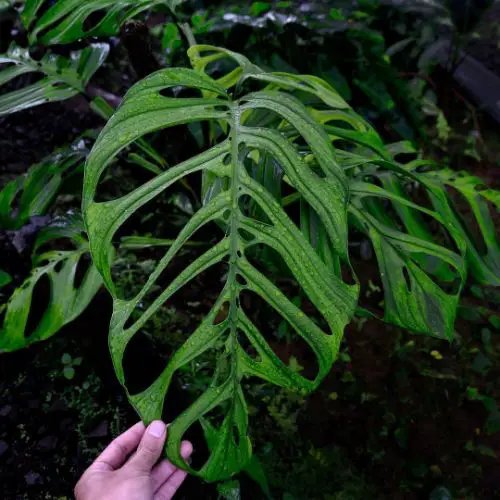
4. Monstera obliqua
Monstera Obliqua is a species of Tropical plant native to the rainforests of South and Central America. The plant is easily recognizable by its large, oval-shaped leaves, which are covered in distinctive white spots.
Monstera Obliqua typically grows as an epiphyte, meaning that it takes root on other plants or trees instead of in the ground. In its natural habitat, the plant often climbs high into the canopy in search of sunlight.
Although Monstera Obliqua is commonly cultivated as a houseplant, it can be difficult to care for due to its specific requirements for temperature and humidity. Those who are successful in keeping Monstera Obliqua healthy often find that it makes a beautiful and unique addition to their home.
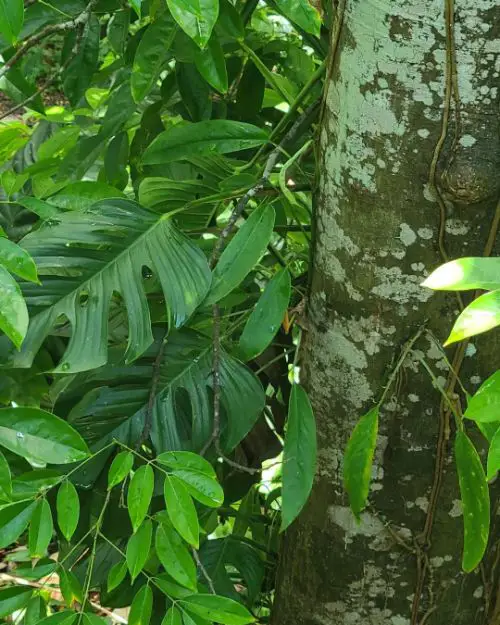
5. Monstera siltepecana
Monstera Siltepecana is a species of flowering plant in the arum family, Araceae. It is native to Mexico, where it grows in the wild in the humid tropical forests. Monstera Siltepecana is a large evergreen vine with dark green leaves that are deeply lobed and have distinctive holes or slits.
The plant produces small white flowers that develop into yellow or red fruits. The fruit is edible and has a sweet, fruity flavor. Monstera Siltepecana is an easy plant to care for and makes an excellent houseplant. It can be propagated by cuttings or division and does not require much fertilizer.
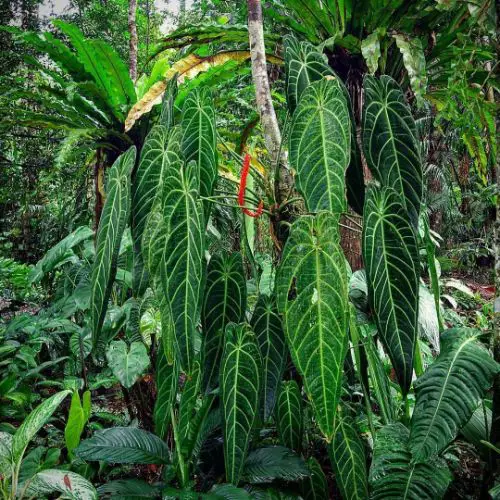
6. Monstera Tuberculata in the wild
Monstera Tuberculata is a species of plant in the genus Monstera. It is native to tropical rainforests in Central and South America. The plant has large, glossy leaves with deeply-lobed margins. The leaves are dark green and may have white veins or spots. The plant produces infructescences that bear white or yellow fruit.
In the wild, Monstera Tuberculata grows as an epiphyte, meaning it grows on other plants instead of in the ground. The plant has long, aerial roots that help it climb trees and other structures. Monsteras are popular houseplants and are often cultivated for their attractive leaves.
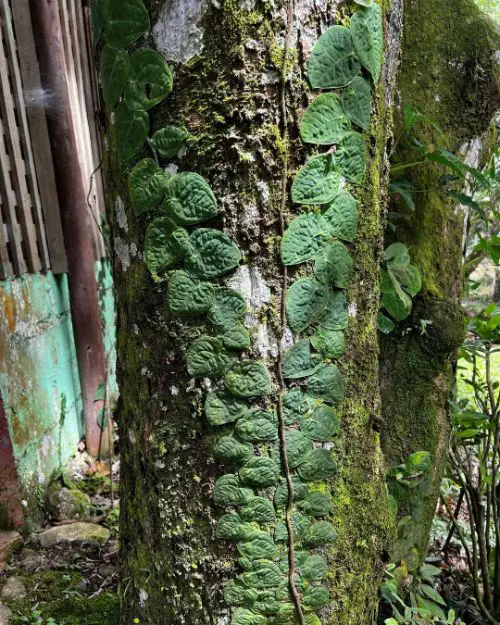
7. Monstera dubia
Monstera Dubia is a species of flowering plant in the arum family, Araceae. It is native to Costa Rica and Panama. The species is widely cultivated as an ornamental plant in warm climates and has become naturalized in some areas outside its native range, including Hawaii and the Society Islands.
Monstera Dubia is an evergreen vine that reaches a length of 20 m (66 ft). The leaves are alternately arranged and have large pores (hence the common name ” Swiss cheese plant”). The flowers are borne in inflorescences that emerge from the leaf axils. The fruits are round, fleshy berries that turn orange-yellow when ripe.
Monstera Dubia is commonly found growing in the wild in moist, forested habitats. It typically climbs on trees or other supports using its aerial roots. In cultivation, it can be grown as a houseplant or outdoors in a shady spot.
Monstera Dubia requires little care and can tolerate periods of drought. However, it prefers to grow in moist soils with good drainage. Monstera Dubia can be propagated from seed or cuttings. It is also commonly available as a potted plant from nurseries and garden centers.
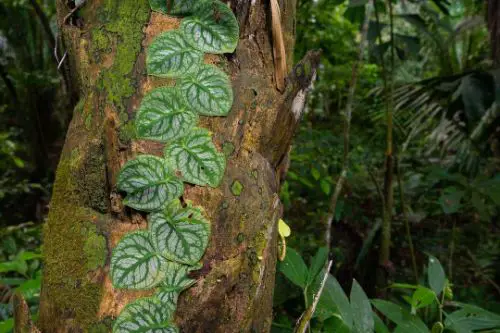
8. Monstera standleyana
Monstera Standleyana, also known as the false Monstera or window leaf, is a flowering plant in the arum family. It is native to Panama and Costa Rica. The plant is named after William James Standley, an American botanist who collected the type specimens in Panama in 1916.
The false Monstera is a vine-like plant that grows up to 30 m in length. The leaves are variable in Shape, but are typically oval-shaped with deep cuts or lobes along the margins. The leaf surface is smooth and glossy, and the leaves are arranged in a spiral pattern on the stem. The plant produces small greenish-white flowers that grow in clusters. The fruit is a small, black berry that contains two seeds.
Monstera Standleyana is found in tropical rainforests, where it grows on trees or other support structures. The plant requires high humidity and moist soil for optimum growth. Monstera Standleyana is propagated by stem cut.
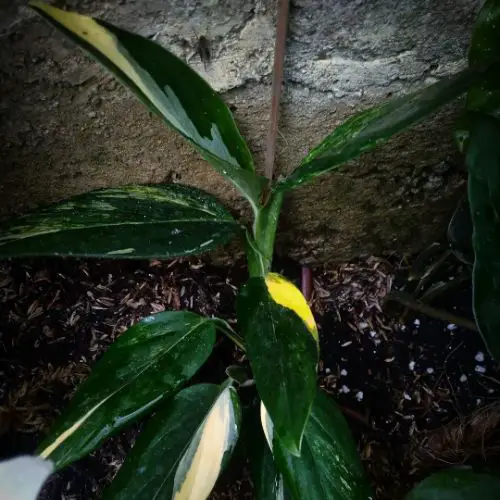
9. Monstera acacoyaguensis
Monstera Acacoyaguensis is native to Mexico and Central America, where it grows in the wild in rainforests. Monstera Acacoyaguensis is a climbing plant and can grow up to 20 m tall. The leaves are dark green in color with white splotches. The flowers are small and yellow and borne on inflorescences that rise above the leaves. Monstera Acacoyaguensis is typically propagated by seeds or stem cuttings. It is grown as a houseplant in many parts of the world and does well in moist, shady conditions.
10. Monstera pinnatipartita in the natural habitat
Monstera Pinnatipartita is a member of the Monstera genus, which contains around 50 species of flowering plants. The Monstera genus is native to tropical regions of Central and South America, where they can be found growing in rainforests and on mountainsides.
Monstera Pinnatipartita is a climbing plant that can reach up to 30 feet in height. Its leaves are large and lobed, with narrow, pointed tips. The plant’s stems are covered in small, sharp spines. Monstera Pinnatipartita flowers are white and borne on inflorescences that grow from the leaf axils. The plant reproduces via spores, which are released by the flowers and spread by wind or water.
Monstera Pinnatipartita is not typically found in cultivation, but it can be grown as a houseplant if given ample space and support. Monstera Pinnatipartita requires high humidity and bright, indirect light. It should be watered regularly, with the soil allowed to dry out somewhat between watering. Monstera Pinnatipartita is best propagated via stem cuttings.
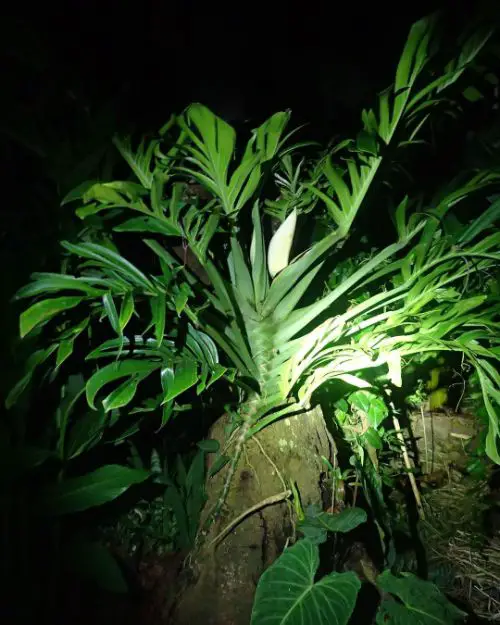
Where can you find Monstera in the wild?
Monstera is a tropical plant that is native to the Americas. it can be found in the wild in countries like Costa Rica, Panama, Mexico, and Ecuador. Monstera grows best in humid, tropical climates and prefers partial shade. it is an epiphyte, which means it grows on other plants instead of in the ground. Monstera is often found growing on trees or other plants in the forest.
You can find Monstera in the wild in tropical rainforests across Central and South America. They typically grow on trees or climb up rocks. Some common places to find them include Brazil, Mexico, Peru, and Costa Rica.
You may also like: Monstera Varieties: 15 Amazing Types of Monstera Plant
How does Monstera grow in the wild?
Monstera in the wild typically grows as epiphytes, which means that they use other trees and plants as support rather than growing in the ground. This allows them to reach the sunlight that they need to photosynthesize and produce food for themselves.
They usually start their lives high up in the treetops, where they send out aerial roots that search for something to anchor onto. Once they find a suitable host, they begin to wrap themselves around it, gradually making their way down to the ground. Along the way, they’ll produce specialized leaves with large holes in them that help to direct water and nutrients straight to the plant’s roots.
Monsteras that grow in the wild can reach massive sizes, often becoming much larger and more impressive than their domesticated cousins.
If you’re looking to add a little bit of the jungle to your home, consider one of these ten common Monsteras in the wild. They’re all easy to care for and make a big impact in any room. Thanks for following along on our journey through the jungles of Monstera.

